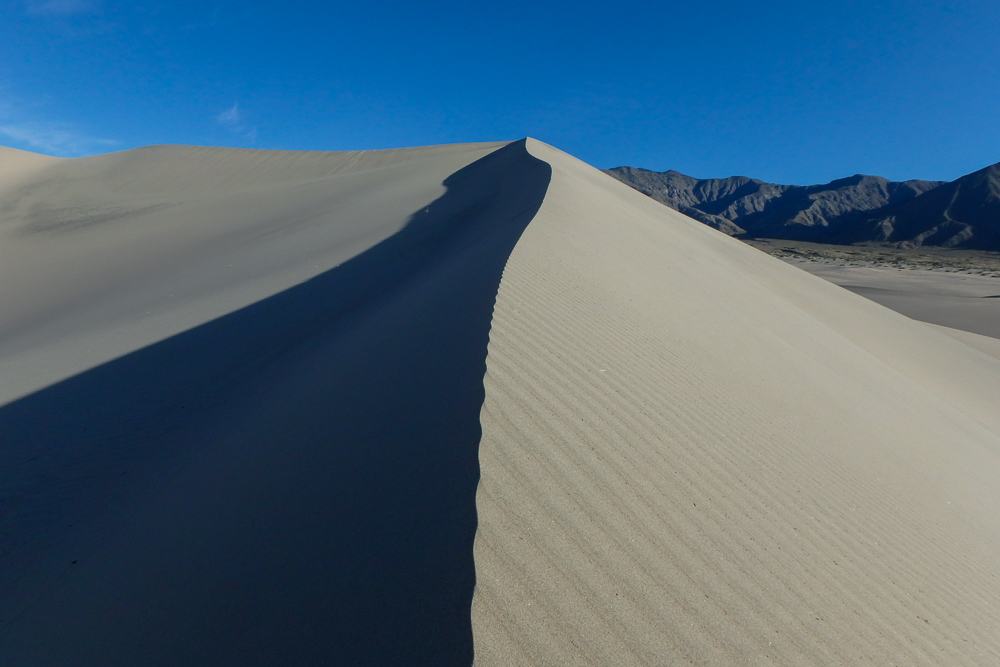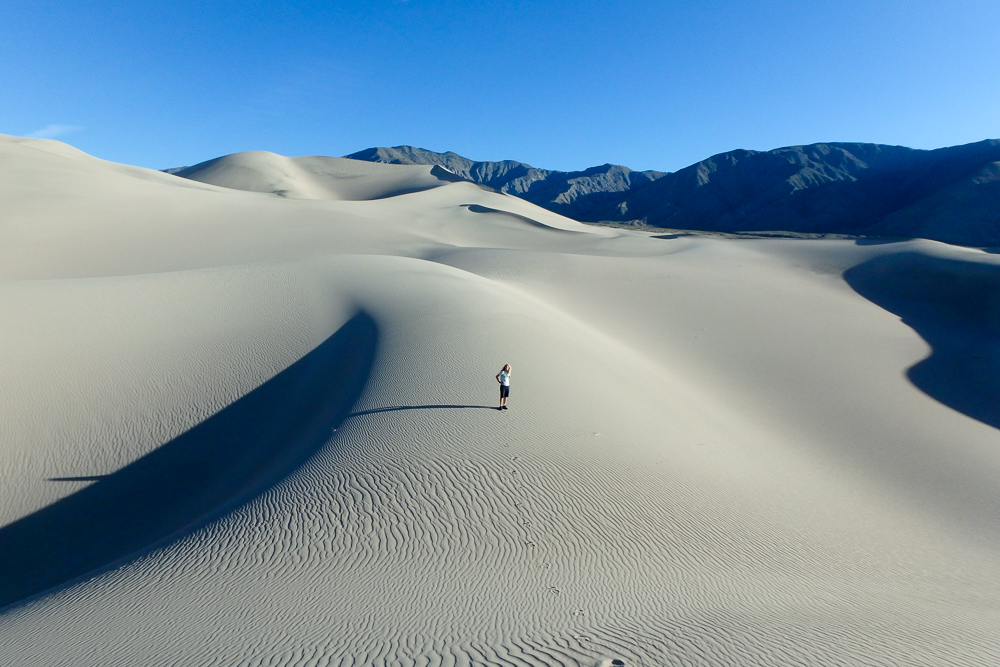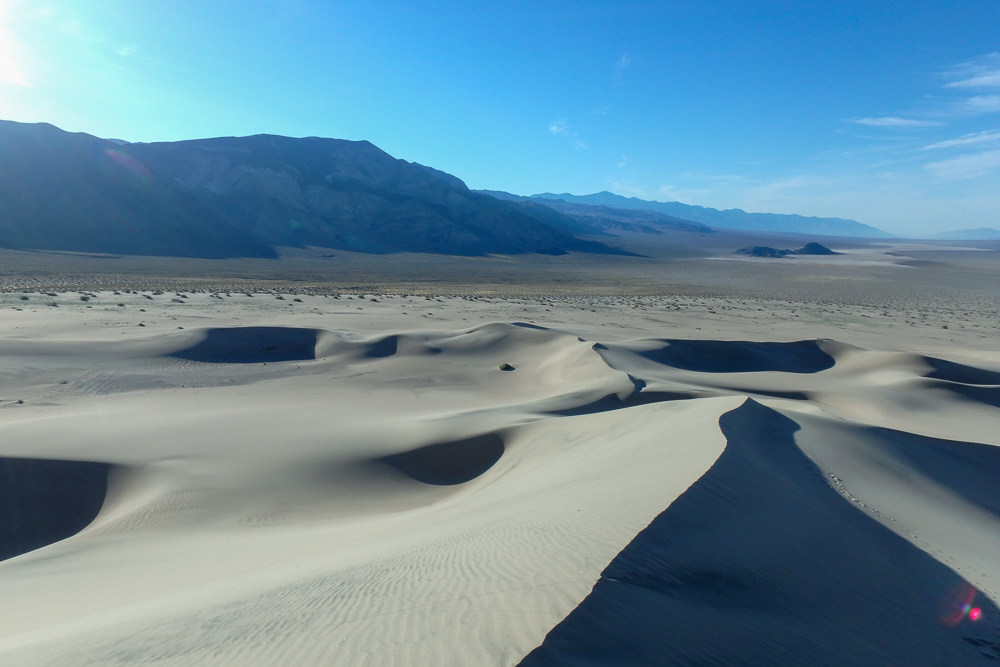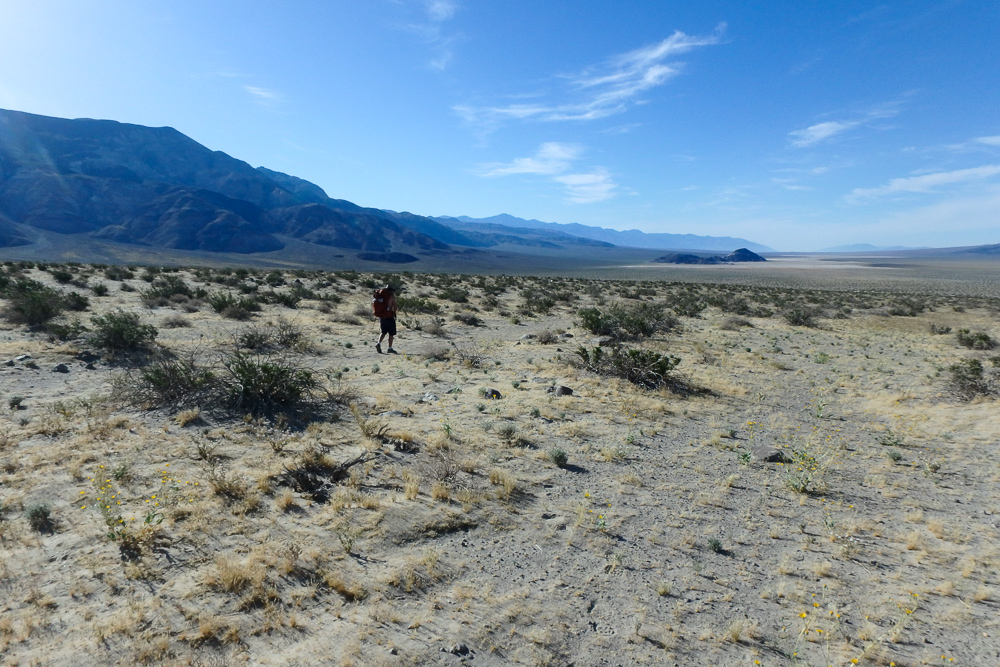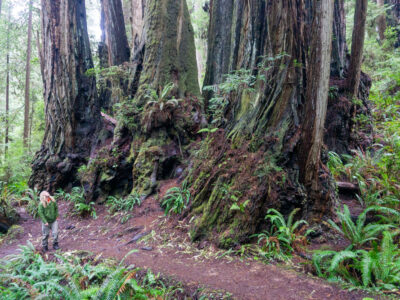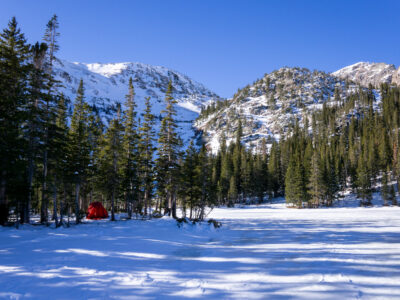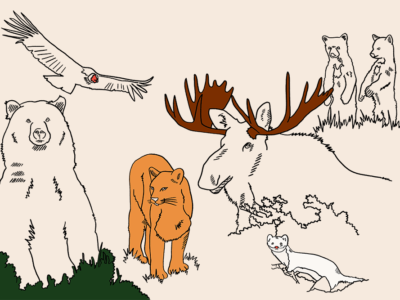03 Apr Panamint Dunes, Death Valley National Park, California
guides // backpacking // southern california
Panamint Dunes, Death Valley National Park, California
This trip has all the best parts of camping in the desert: soft sand to sleep on, warm nights so that you can stay out later and watch the stars come out, and that really remote feeling you get when you know that there’s no one around for miles. It’s also a great beginner trip because of the high payoff-to-effort ratio.
Quick Notes
Pictures taken May 2017
Total Distance: 8 miles
Elevation Gain: Varies
Difficulty: Easy
Days: 1 Night
Hike Type: Out-and-Back
Seasons: Fall, Winter & Spring
Permit Requirement: No
Camping: Dispersed Camping
Map: National Geographic Death Valley National Park
Water: Carry in all water (1 gallon per person per day)


When to Go
It’s no surprise that Death Valley is a very-very hot place. To experience blood-boiling heat like we did, you’ll want to visit May through August. When we visited in late May (high of 113°F) we spent afternoons lounging about in the air-conditioned movie room at the Furnace Creek Visitor’s Center. A lot of businesses also have great porches where you can sit in rocking chairs and dream about bathing in ice-cold lemon-lime Gatorade.
For a more mild experience, winter and spring are great times to visit the park. In February, the flowers of Death Valley (yes, there are flowers here) all bloom in one big display called the Super Bloom. For information about the Super Bloom, click here.
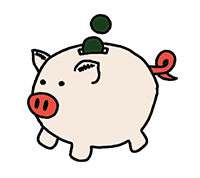
Trip Cost
Park Entrance Fee*
Wilderness Permit Fee
Wilderness Permit Reservation
$5
Free
$5 per reservation + $5 per person
*If you know that you’re going to be going to a national park more than three times in a year, it’s worth it to buy a National Parks Pass. They’re $80 and sold online, at all REI locations, and National Park Visitor Centers.

Before You Go
You don’t need a back country permit for overnight trips in Death Valley, so there’s no paperwork before you go on this trip. Backpacking here is nowhere near as popular as in other parks (could it be the crushing heat??) which means that you’ll most likely have the place to yourself.
Even though you don’t need a permit, it’s a good idea to stop by a ranger station, to check current conditions and trail closures.
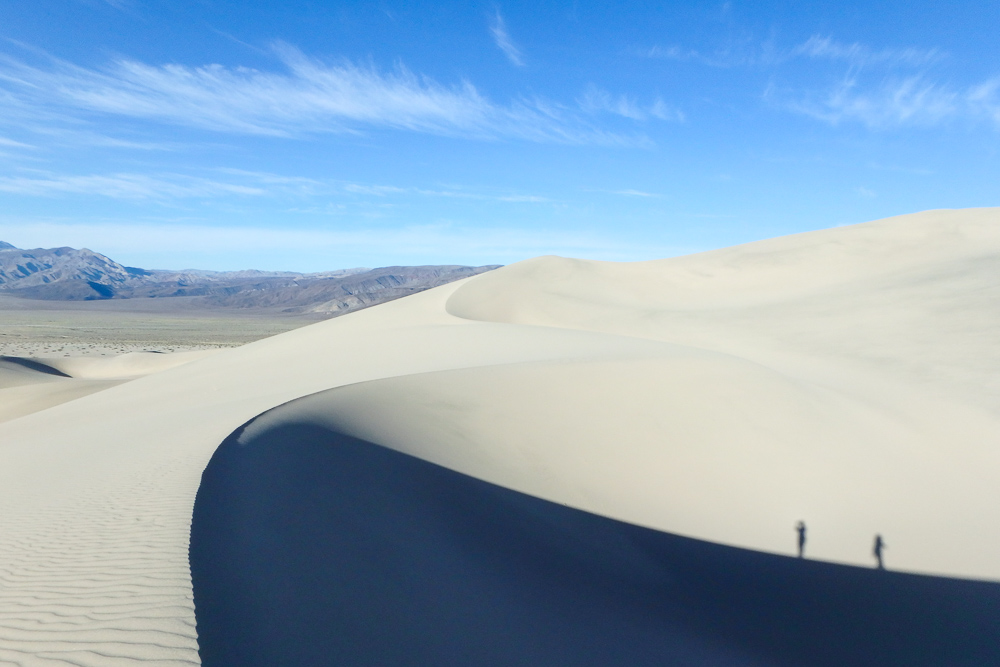
Dune shot with tiny little shadows.
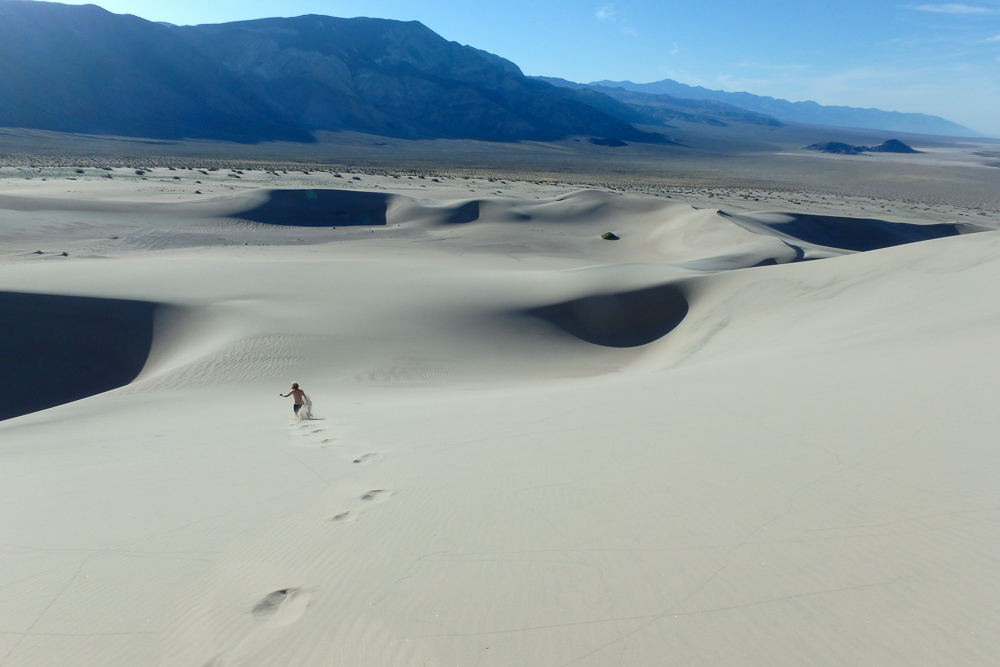
We had so much fun running and rolling down the dunes.
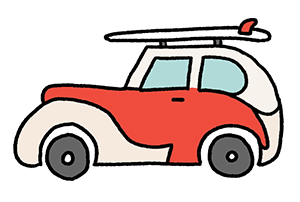
Getting There
Because Death Valley is so hot (have I mentioned that yet?), the hiking schedule for this trip is very unusual. To avoid being out on the dunes in the incinerating mid-day heat, it’s best to start this trip as the sun is setting. We ended up getting to the trailhead and starting our hike around 6 PM.
The Panamint Dunes trailhead is located in the far west side of the park off of Highway 190. There is a small dirt road on the north side of the highway near the town of Panamint Springs that will take you to the trailhead. The dirt road is 5 miles of car torture that is definitely more suited for a high clearance vehicle. For reference, our Subaru Crosstrek made it, but it was quite an uncomfortable ride.
There’s a small convenience store in Panamint Springs where you can buy water (you’ll need to carry water in because there’s no safe drinking water on the trail) and snacks.

The weather was so warm and still that we didn’t even need our rain cover.
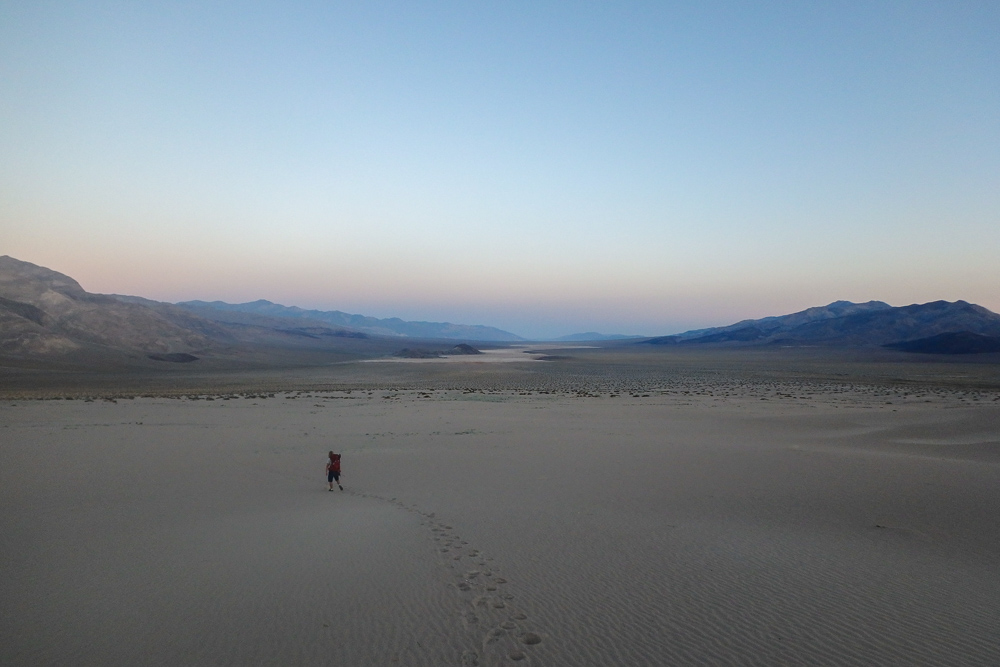
A beautiful desert sunset.
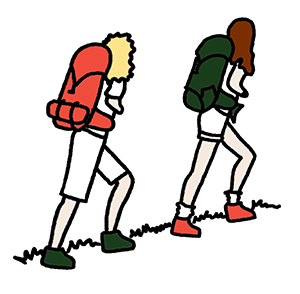
On the Trail
The trail starts out on grainy desert sand and fades in and out as you get closer to the dunes. We found it easier to make our own route and walk straight at the dunes. The biggest obstacles on this hike are 1-foot deep dried-out stream beds left by rainstorms.
After about 3 miles, the ground will get much softer as the grainy desert sand mixes with the softer dune sand. You can camp anywhere in the area, including on the dunes; however, it gets really hard to walk once you get farther in. We camped at the foot of the first big dune because it was getting late and we were getting hungry. In the morning, we were able to play on the dunes a lot more. The early morning is one of the best times to photograph the dunes because the low suns casts all kinds of cool shadows on the dunes.
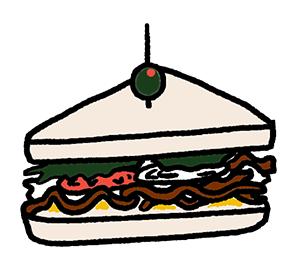
After the Hike
There’s not a lot to eat on this side of the park; however, there is a convenience store in Panamint Springs to pick up some snacks and that (lemon-lime) Gatorade. We waited until we got to Bakersfield to stop for lunch and I can’t remember anything about that lunch.
Supply List
The Usual List
Backpack
Tent
Sleeping Bag*
Sleeping Pad*
Sleeping Bag Liner
Camp Stove
Lighter or Matches
Cooking Pot
Food
Water Vessel
Water Filter
Headlamp
Clothing Layers
Trip Specific Things
Wide Brimmed Hat
The sun is a cruel-cruel ball in the sky. To protect my head from the sun, I like to wear my wide-brimmed hat in the desert. Also, I like the way it makes me feel like a true explorer. Bonus points for preventing premature aging caused by the sun – you know you miss spots with that sunscreen.
Water
There’s absolutely zero water on this trail. You have to pack in all of your water, so make sure to parcel out the right amount for drinking and cooking (if you decide to cook out there). We recommend carrying at least one gallon per person per day; however, we always end up bringing more than this for cooking.
*Sleeping Bag + Sleeping Pad
These are actually items you may be able to leave behind. It was warm at night in May so we decided to ditch the sleeping bags and just bring in our sleeping bag liners. The sand was also nice and soft so we could’ve ditched the sleeping pads.
Thinking about doing this trip? Have any questions? Comment down below!

